This is the second photo essay concentrating on the ivories collection of the Gambier Parry Collection. From the 11th to the 14th century, there was a huge expansion of carvings made in ivory with loads of Walrus and Elephant tusks arriving at Paris where they were sold and ivory carvers, painters, restorers, box makers, etc. worked to create magnificent works of art. Diptyches or Triptychs, a two or three panelled portable altars were the most common and popular, which would be used while on travel, placed on a table and then prayers would occur.
Aristocrats would commission particular pieces to suit their own tastes and religious proclivities as an aid to prayers and meditation. I have not shown all the carvings here, but do check out the full slide show where they can be seen. Please bear in mind that most of these exhibits were 4-6 inches in height, the scale is a tad difficult to make out.
This is a triptych showing the Virgin and Child in the middle, flanked by the Annunciation, Nativity, Adoration and Presentation on the left and right respectively. Probably from France, mid 14th century. This would have been coloured and gilded. Some traces of the colour can be seen just next to the cherub on top of the Virgin’s head., some of the saint’s clothes. Traces of gilding are visible on the corners, the hair of Christ and on the cherub sings on the tops of the left and right panels. In the right hand, the Virgin would have been holding a lily but that is now lost, but just behind her hand is a gilded flower stalk which is hiding a crack in in ivory background. You can see the absolute magnificence of this work, folded, this would be about 2 inches thick and is about 6 inches tall, with iron hinges. Although the hinge areas are showing serious damage. Not surprisingly, this must have been opened and closed zillions of times in the past 600 years. Utterly beautiful.

Beautifully carved Virgin and Child from France or the Benelux countries in early 14th century. Its just lovely, long flowing lines in the translucent ivory. The virgin is holding a dove in her right hand, while the child is holding what looks to be like a tablet of some sort. Lovely peaceful expression on the Virgin.
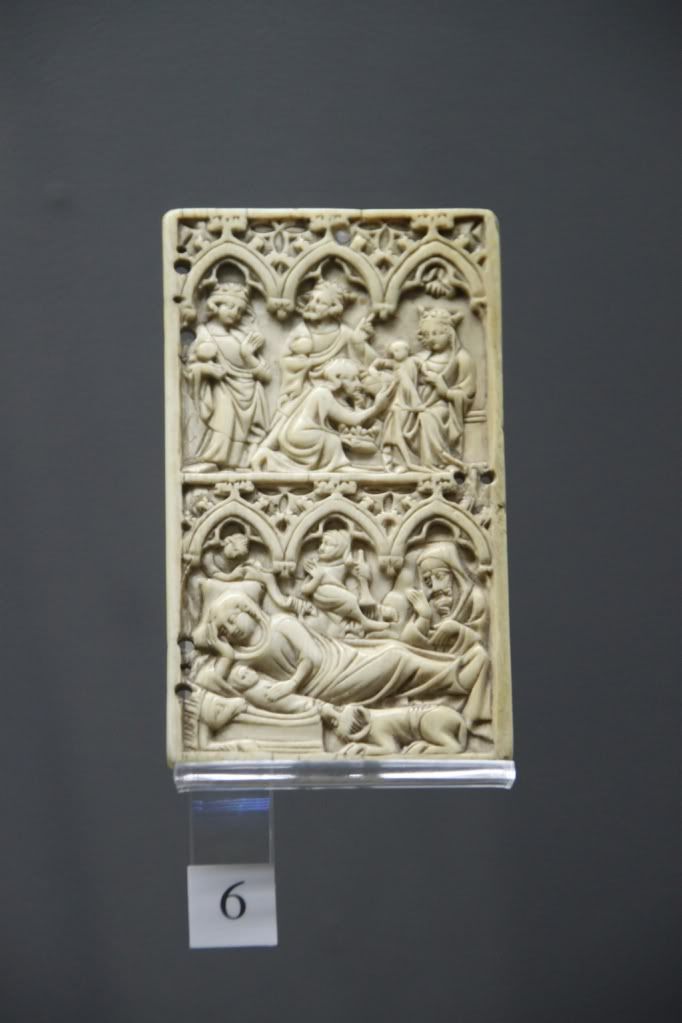
This is a Devotional Writing Tablet showing the Adoration and Nativity scene from Netherlands or Germany from the 14th century. This panel would have been the cover of a writing tablet. In the back, it would have a shallow recess to hold the wax, and then you can write on it.

This is the Passion Diptych, Annunciation to Pentecost. Think of this as a comic book, you have to start reading from the bottom left till you reach the panel at the top which shows the Pentecost, the day when the Holy Ghost descended on the disciples. Pretty amazing detailed work, no? The mind boggles at the level of determination, the dedication, the fine detailed work, the polishing, the absence of error and mistakes, Just brilliant.
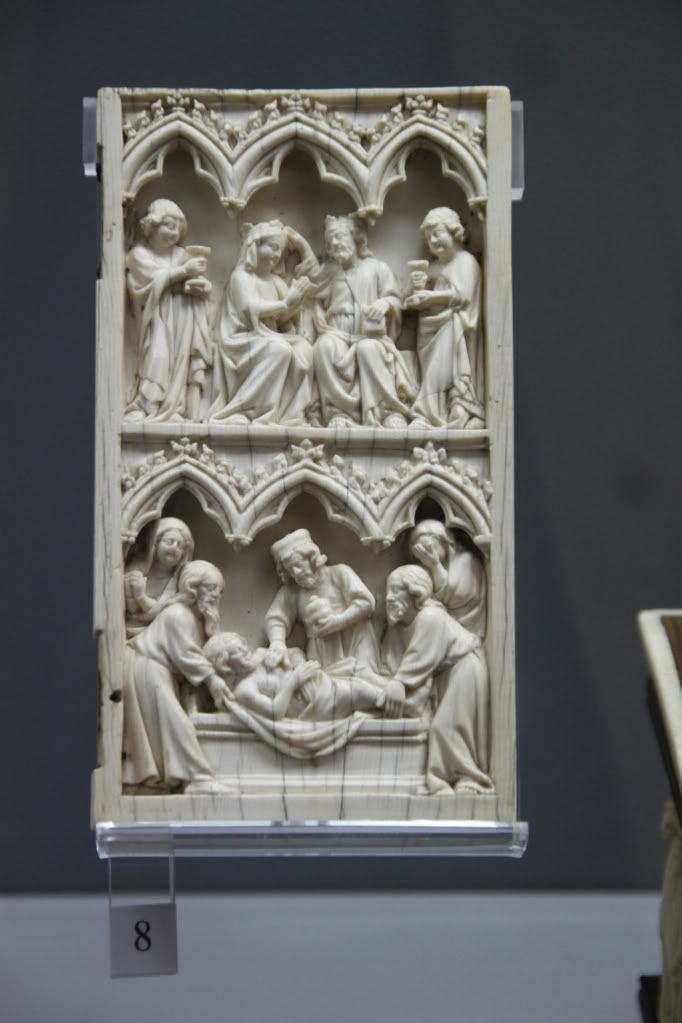
This is a piece of a broken Diptych, showing the Coronation of the Virgin and the Entombment of Christ, French from the mid 14th century.

This is a plaque showing the Virgin, the Child and the Risen Christ, from Italy or France made in the early 14th century. The blurb says that this could have been used to decorate a crosier, a bishop’s ceremonial staff.

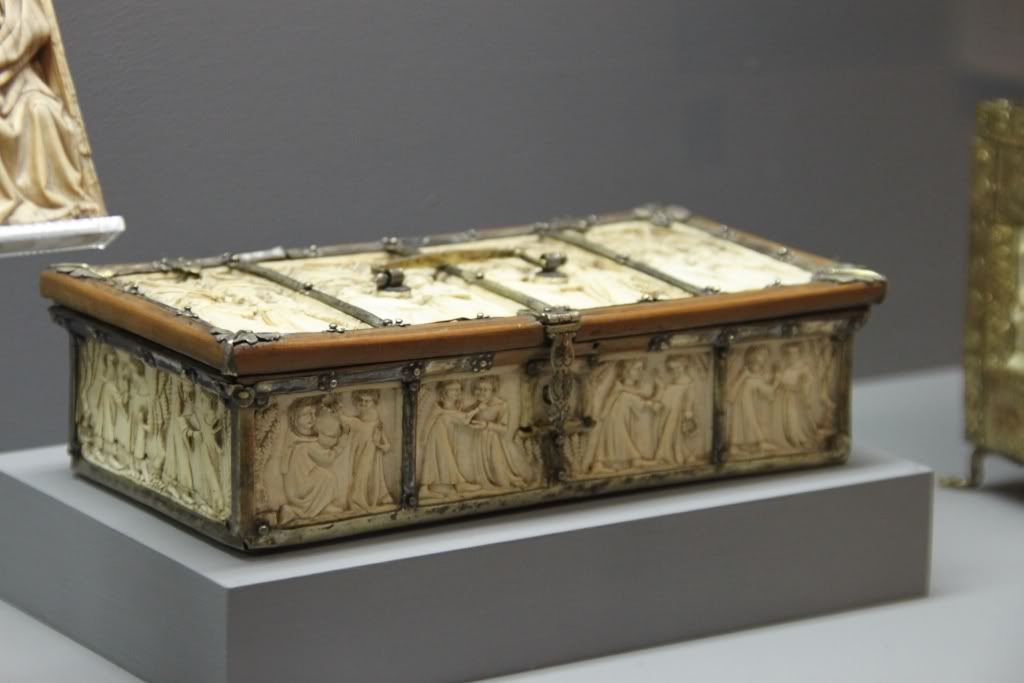
Then we have couple of absolutely amazing boxes with ivory inlays. On the left is a bone mounted chest from Italy, most probably a marriage chest, with the family coat of arms emblazoned on it. The panels show pairs of lovers in a landscape. Could have been used to store jewellery I guess. The dark mark in the middle panel is actually a keyhole so that one could lock it. The right hand side box is from France which depicts courtly love. Nice.
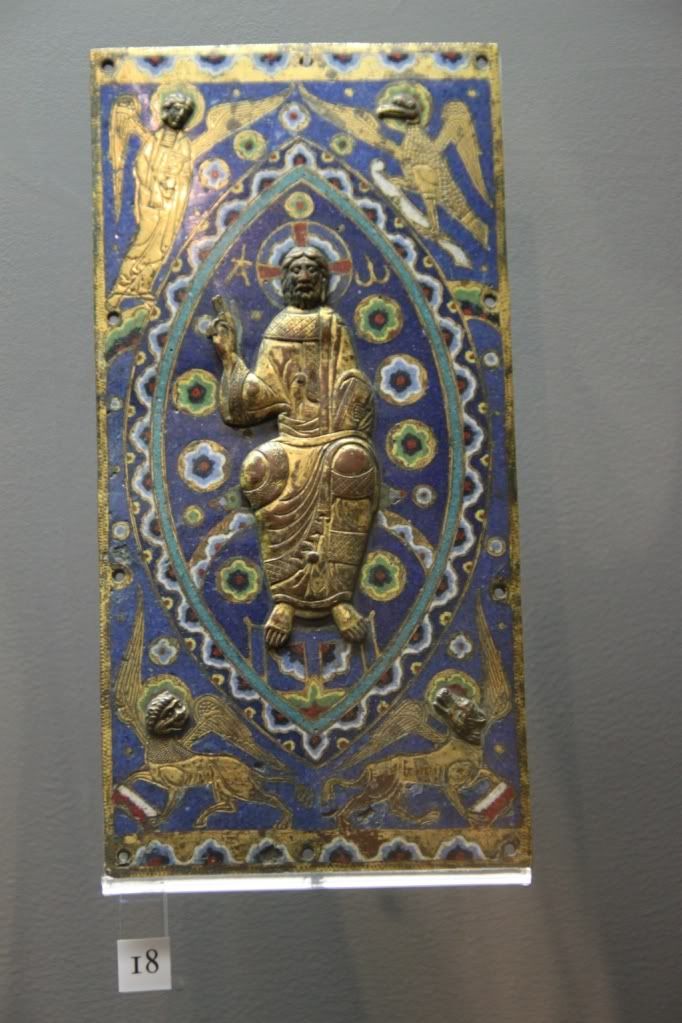
Finally an extraordinary gilt bronze and enamel plaque which would have been used as a book cover. You can see the holes on the left hand side which would be used to sew this cover on top of a liturgical book. This is not made out of ivory, obviously but was in the same display case. Fascinating stuff.
In the next and last photo essay, I will be showing some Islamic metal work which was imported into Europe from the Middle East.

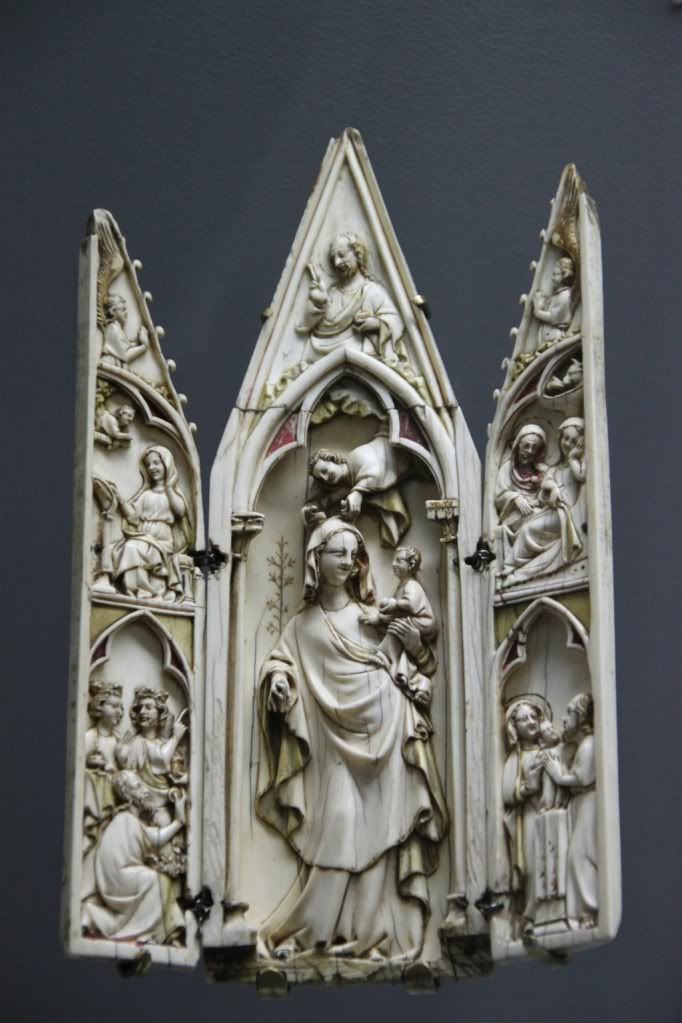

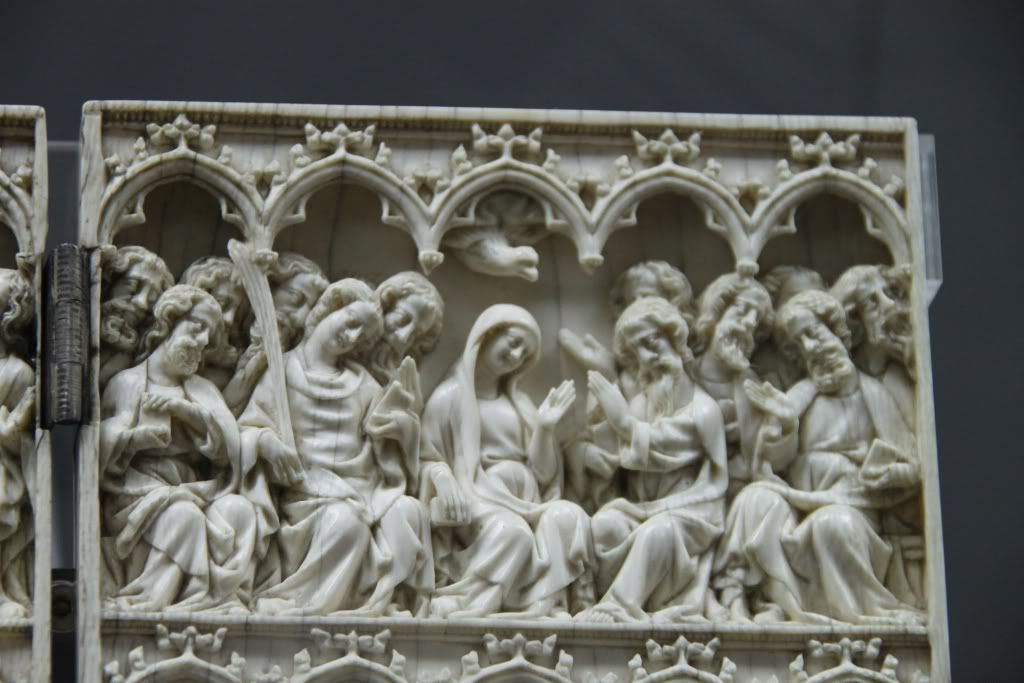
No comments:
Post a Comment